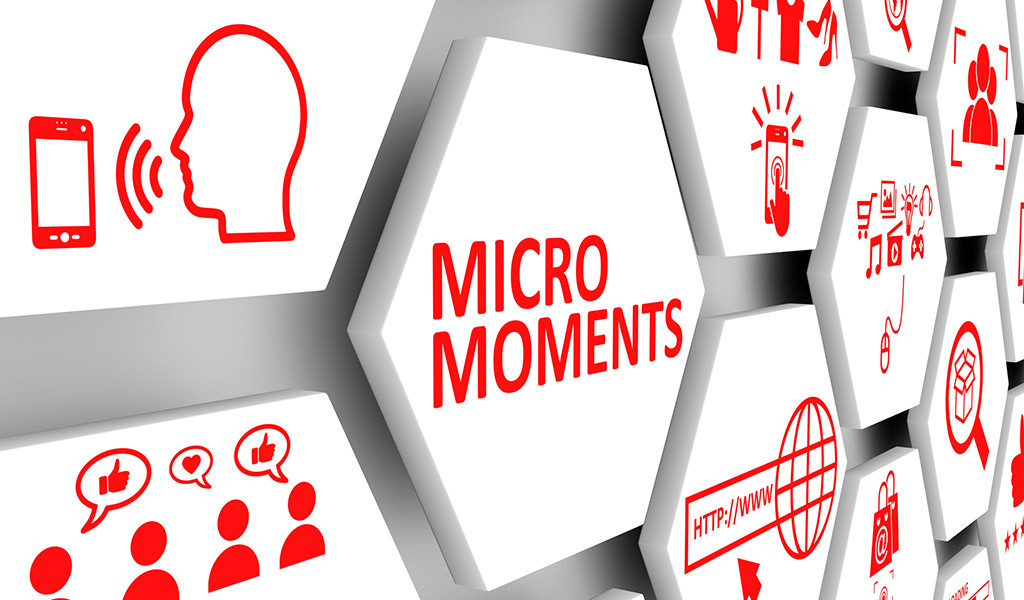
The world of business can be fiercely competitive. In 2019 it seems we are constantly bombarded with ads by thousands of companies every day – each one of them trying to convince us they are the best! According to many leaders in the marketing arena, the average modern person sees around 5000 ads per day. With so much ad noise filling up people’s day, how do you make your company stand out? What are some steps you can take to wow your customers and set yourself apart from the competition?
To answer that question, we’re going to take a close look at micro-moments and tell you how you can implement strategies to connect with consumers at the right point in the buying cycle. Micro-moments are becoming an increasingly important aspect of marketing strategies for companies of all sizes, so it’s time to make them a priority. We’re also going to present you with 6 things you can do to wow your customers, so you can hopefully build up an army of brand loyal shoppers!
What Are Micro-moments?
‘Micro-moments’ was a term coined by tech giant Google, and is used to describe the act of going online to fulfill a clear need. A micro-moment is when you jump online with one purpose in mind. It’s an almost reflex-like desire to find a solution to your situation, whether that’s to learn something, watch something, or buy something.
It’s every brand’s goal (or at least, it should be) to position themselves in front of the customer when a micro-moment occurs. There are a couple of huge success stories here. Google, for example, has become synonymous with “search” or “search engine” for a lot of people. You’ll often hear the term “Google it”, or find yourself automatically going to Google when you need to find a recipe for your dinner. Netflix and YouTube are similarly huge when it comes to entertainment users will default to fulfill the desire to watch content.
On a much smaller scale, micro-moment marketing is all about connecting with your customers at key points in the buying cycle. Google estimates that 82% of smartphone users consult their phone while in-store deciding what to buy. What’s more, one in ten of these consumers end up buying a different product to the one they had planned. This is where you should aim to insert your brand. The consumer is already looking to buy a product, and they are turning to their device to act on a need (to learn more information about what to buy). If you can insert your brand into the equation in the right way, they may just decide to go with your product over your competitors.
In 2019, a full $2.9 billion of Black Friday sales happened on smartphones, compared with 1.2 billion in 2016. Consumers are now turning to smartphones as their primary way to act on something they need right now. This means that tailoring your marketing to a smartphone user is essential. Your competitors are doing it, so you should be too.
Why You Should Care About Micro-Moment Marketing
When it comes to marketing strategies, there’s already so much pressure to get it right and so many things you’re supposed to do. You may be thinking “another thing, really?”. You’d be forgiven for thinking like this, but micro-moments aren’t something you can ignore in your marketing strategies. They’re the next big thing that all marketers are doing, and if your website is poorly tailored to micro-moments, you’re probably losing business. All businesses want to wow their customers, but there’s also a lot to be said for being in the right place, at the right time, with the solution your customer needs. Of course, you could do both, and that should be what you’re striving for. Let’s look at a few statistics that really illustrate why you should care about micro-moment marketing.
- Fewer consumers are committed to brands than you think. Around 90% of smartphone users are not absolutely certain of the brand they want to buy when they begin searching online.
- Increasing brand awareness. If your company is coming up in relevant results when smartphone users have a question, then you’re putting yourself into their sphere of conscious. They may act on buying from your company, or they may remember you when they need a similar product in the future.
- You can snap up your competitor’s customers! If you insert your product at the right time and with the right message, you can sway consumers from your competitor over to you, even when they have bought from your competitor before. In fact, 1 in 3 smartphone users has purchased from a brand other than the one they intended to because they provided information at the moment they needed it.

Implementing a Micro-moment Process
Okay, so you know what micro-moments are, but how do you insert your brand into the customer’s moment of action. The goal here is to design your marketing materials and your website to satisfy your customer’s questions when they are in a position to act. Let’s break down some ways to do this.
Understand Your Consumers
Understanding your customers is critical. If you don’t understand who your consumers are, want they want, and how your product or service solves that want, then you don’t know how to make your marketing resonate with them.
Brainstorm All Potential Micro-Moments
Micro-moments are broken up into four categories which you can see below, along with an example:
- I’m interested in knowing: a consumer wants to know the specifications on a certain TV, the capital of Greece, how wireless headphones work, etc.
- I want to do that right now: the consumer wants to remove a stain from their T-shirt, know how to pull out weeds or find a recipe. In this situation, the consumer is looking for more information on how to proceed with their task.
- I want to go to this place: a consumer is searching for Italian restaurants in the local area.
- I want to buy it: a consumer is looking for a certain product and is likely going to browse the available options.
It’s important to think about where micro-moments may occur throughout the customer (or potential customer) journey. For example, let’s pretend your product is wireless earphones. You know that wireless earphones are popular with runners and that runners will care about how secure your earphones are, as well as whether they cope well with sweat, and so on. Many runners without wireless earphones are going to experience a problem with their wired earphones and take to Google to search for the wireless alternative. This is where you get to set yourself apart by answering those questions. Your company should be put in front of the runner and convince them that your product offers everything they need.
Micro-moments can also be created with your customer service team. Your customer service team gets valuable one on one time with your customers, getting to know what they like. If a customer and agent have a good rapport going on, and the customer mentions a problem that can be solved with one of your other products, then great! This is a perfect opportunity to upsell.
The same is true more generally when it comes to customer service or sales agents. The customer is only contacting your customer service team because they have an issue of some sort with your product. Maybe the product isn’t working, maybe they’re confused, or maybe it’s set up incorrectly. With sales, they probably want to buy your product or negotiate a better price. Whatever the situation, the customer wants to know, buy, or do, something with your product, and that means you can use this opportunity to remind them why they bought from you before, or wow them into buying from you for the first time.
Develop Tactics and Strategies Based on These Moments
This is the tricky part! Your strategies need to effectively target your consumers during their micro-moments. Exactly which strategy you choose will depend on your industry and your consumer demographics. Here are a couple of tips on how to develop your strategies:
- Research the search patterns within your market. Knowing what your customers search for and when they search for it will help you get your content in front of the customer at the right moment.
- Identify why they are searching for that term. If you can figure out what needs they are trying to satisfy, you can tailor your marketing to their micro-moments.
6 Things You Can Do to WOW Your Customers
1. Create a Frictionless Experience for Your Customers
Micro-moments are all about encouraging consumers to choose your company based on a want or need they have at that moment. It’s a time-sensitive strategy, and consumers will abandon the buying process if they are met with a complicated purchasing experience. You should minimize the number of clicks your customer has to perform to buy your product or find more information on your product.
A great example of a frictionless success story is Domino’s. The popular pizza company realized that people wanted to buy online, but they were turned off by a long checkout process. They decided to revamp their website to reduce the number of steps from over 25 to only a few steps, and their conversion rates skyrocketed.
There’s a lot that goes into creating a frictionless experience for customers, but let’s take a look at key areas you can focus on.
An Omnichannel Platform and Modern Tech
managing all of your customer service and sales interactions through one platform cuts out a lot of the software bloat that slows down customer interactions. We’ve all been in a situation where we’re passed from customer service team to customer service team, endlessly repeating what we need help with. You get passed around because you got put through to the wrong person initially, and you repeat yourself ad nauseam because that information isn’t following you through the chain.
Utilizing an omnichannel platform alongside the latest AI, machine learning, and modern tech tools are simple and effective solutions to these common problems. If you can create a positive experience for your customers, one they associate with a smooth and straightforward process that got them what they wanted, you’ll create loyal customers. Loyal customers are a huge asset to your business. In fact, 40% of loyal customers will spend more on a product even if there are cheaper options available.
A Website Fit for All Users and Devices
We’ve already established that consumers overwhelmingly use their smartphones during micro-moments, so it’s absolutely essential that your website looks good on all smartphones.
Compare Your Buying Process to Your Competitors
Ask a friend or family member if you can time them trying to buy something from your website, then repeat this for your competitor’s websites. If it takes considerably less time to buy something from a competitor, then you know your buying and checkout process needs some work.

2. Flexibility
Rules and processes can be good to have, but make sure they don’t restrict your staff from being able to provide wow moments. You’re going to get customers calling your customer service teams with unusual or complicated requests. In these situations, there won’t be a handbook ready for your customer service agents to scan through to get to the right answer. Instead of putting customers on hold, making them wait, and transferring them around, allow your staff the agency to help them with problems there and then, even if there isn’t a clear strategy. You create strong brand advocates this way.
3. Be Prompt
According to research by Forrester, 45% of US consumers will abandon their online purchase if their questions or concerns are not answered quickly. This is why it’s no longer good enough to have only one line of communication and for a limited set of hours. If your customer is available, you should try your best to be available also. This means diversifying your communication channels so you have options like Live Chat, Chatbots, call centers, emails, and social media.
4. Be Spontaneous With Surprises
Everyone loves good surprises! It’s a great way to let your customers know that they are valued. And according to a study by Forrester, 76% of consumers consider their interactions with customer service to be a test of how valuable they are to the brand. Customer service agents can offer customers spontaneous discounts, credit, or special offers in certain circumstances. This is your chance to remind your customers that they are valuable and that your company offers perks over your competitors.
5. Have an Impressive Website
Scientists have spent decades trying to answer the question “what do humans find beautiful?”. Well, we still don’t have a definitive answer, but we’re pretty close. We know that people like the text to contrast with backgrounds. We know that people like combinations of colors if they are opposite each other on the color wheel, or any three colors equally spaced around the color wheel that form a triangle. We know that our eyes scan in an F-shape, focusing on the left and top of an image and scanning horizontally.
There’s a lot more to it, but you get the idea – there’s a science behind what we find pleasing to look at, and you should be aware of this when designing your website. If your website looks harsh and is clunky to use while your competitor’s website is visually stunning, consumers will favor your competitor even if your prices are lower. Your website is a reflection of your business so make sure it’s saying what you want it to say.
6. Don’t Be Faceless
The modern approach to business is all about customer experience and making valuable connections with customers. The relationship between customers and businesses is now less transactional, cold, and faceless. Don’t be afraid to be personal and have some fun. Customers don’t want to talk to a nameless logo, they want to talk to a person when they talk to an agent or talk to a representative from your company on social media. Use first names, have a fun signature on your email, and responding playfully on social media are all great ways to become more personal.
Conclusion
If you want your company to stand out in the digital age, you need to deliver customers what they want and at the right time. This means doing your research and learning who your customers are, what they are searching for, and why they are searching. If you can identify who your customers really are, you know how to insert yourself into their buying process to ensure that they pick you over anyone else!
Micro-moments, tailored content, target ads, omnichannel platforms, and the latest tech, are all part of the same picture, and that picture is ‘customer experience’. Customer experience is what really sets your company apart from your competitors. Customers are more likely to buy from you the first time if you turn up in their moment of need and give them a simple and pleasant buying experience and they’re also more likely to come back to you a second time. Now is the time to act and take your customer experience to new levels, or you may see yourself left behind.